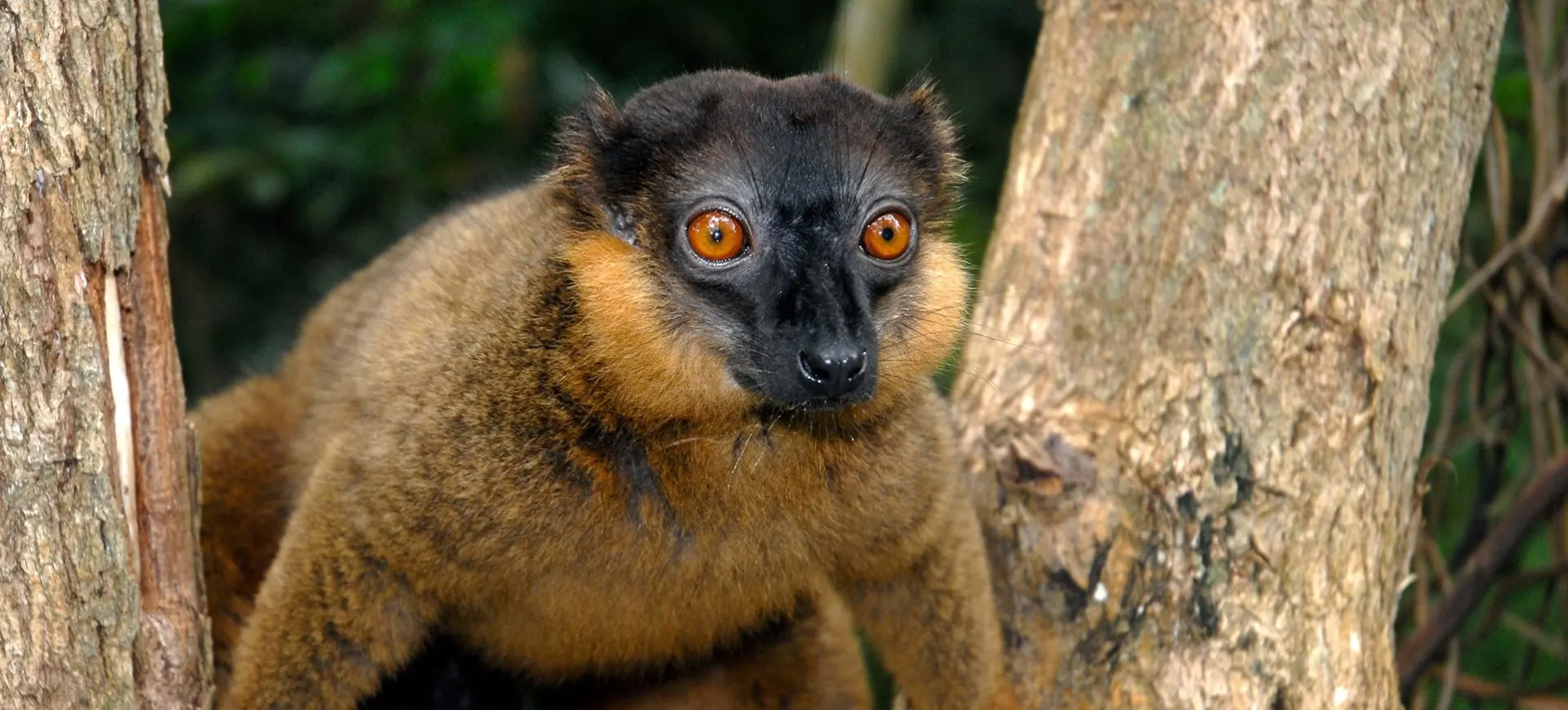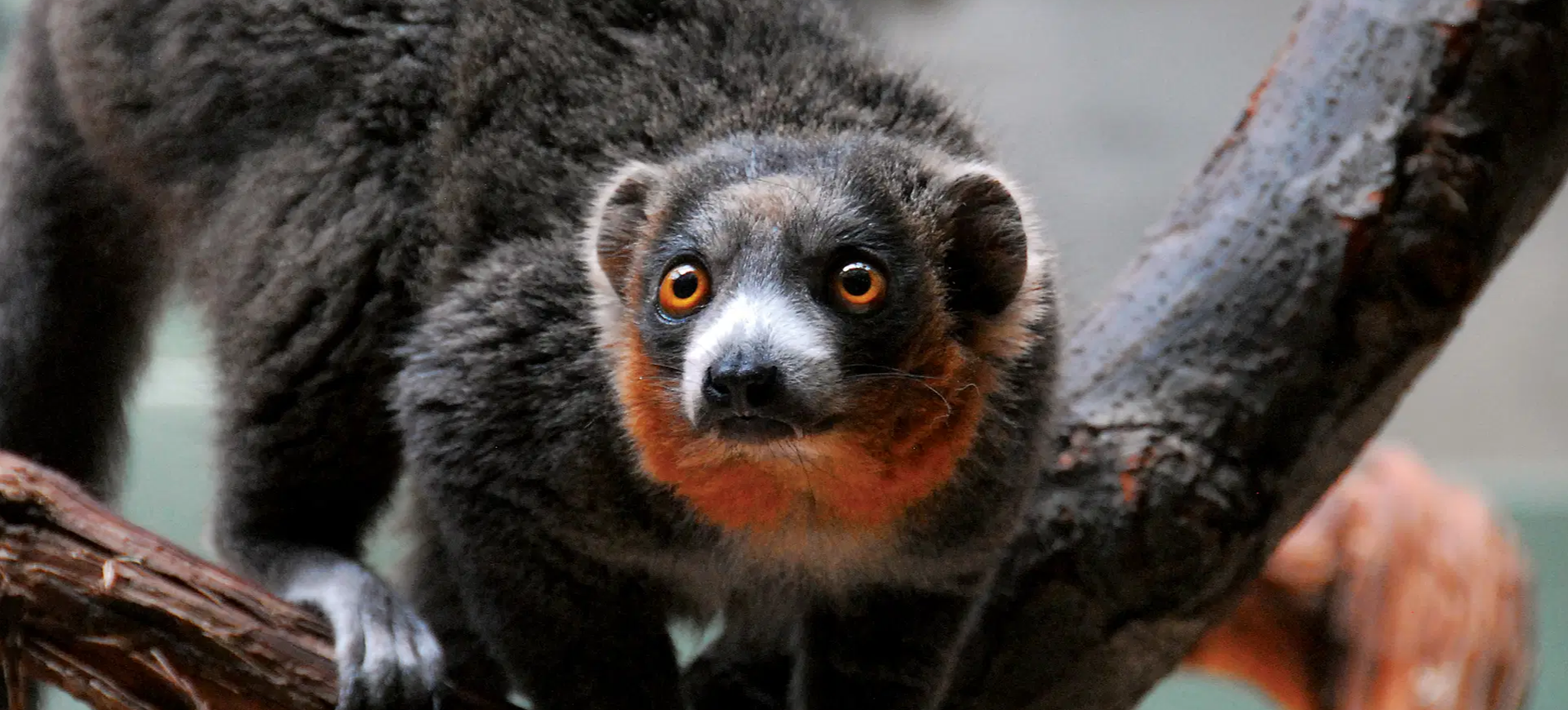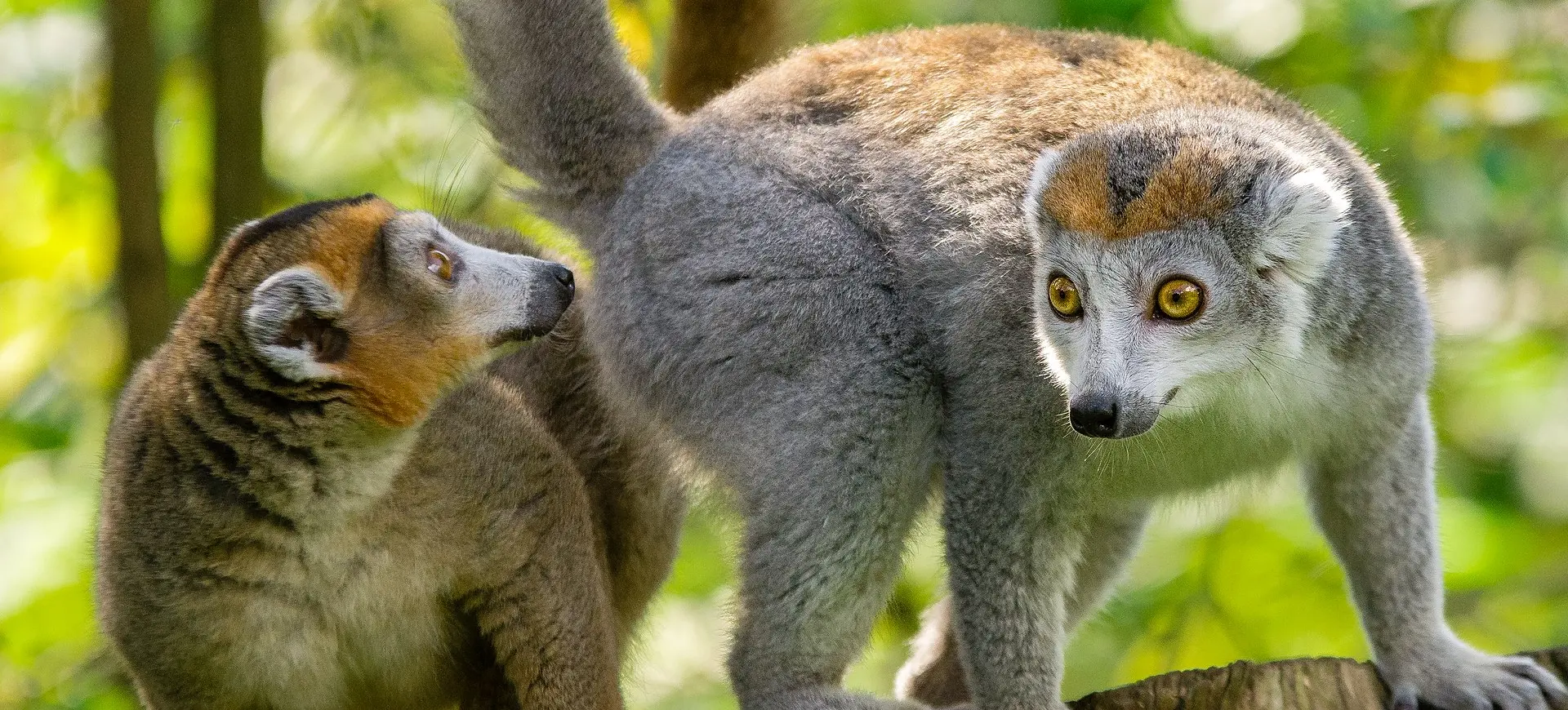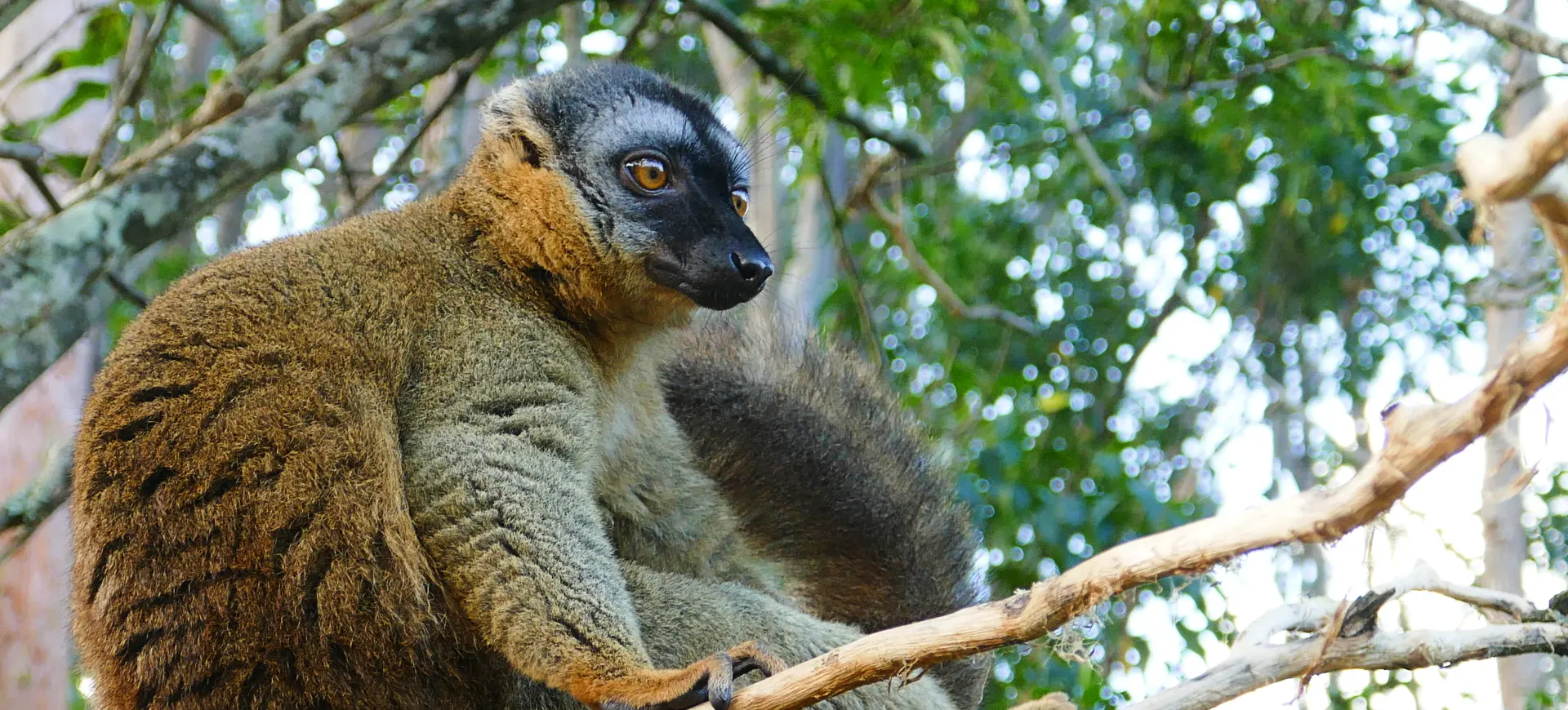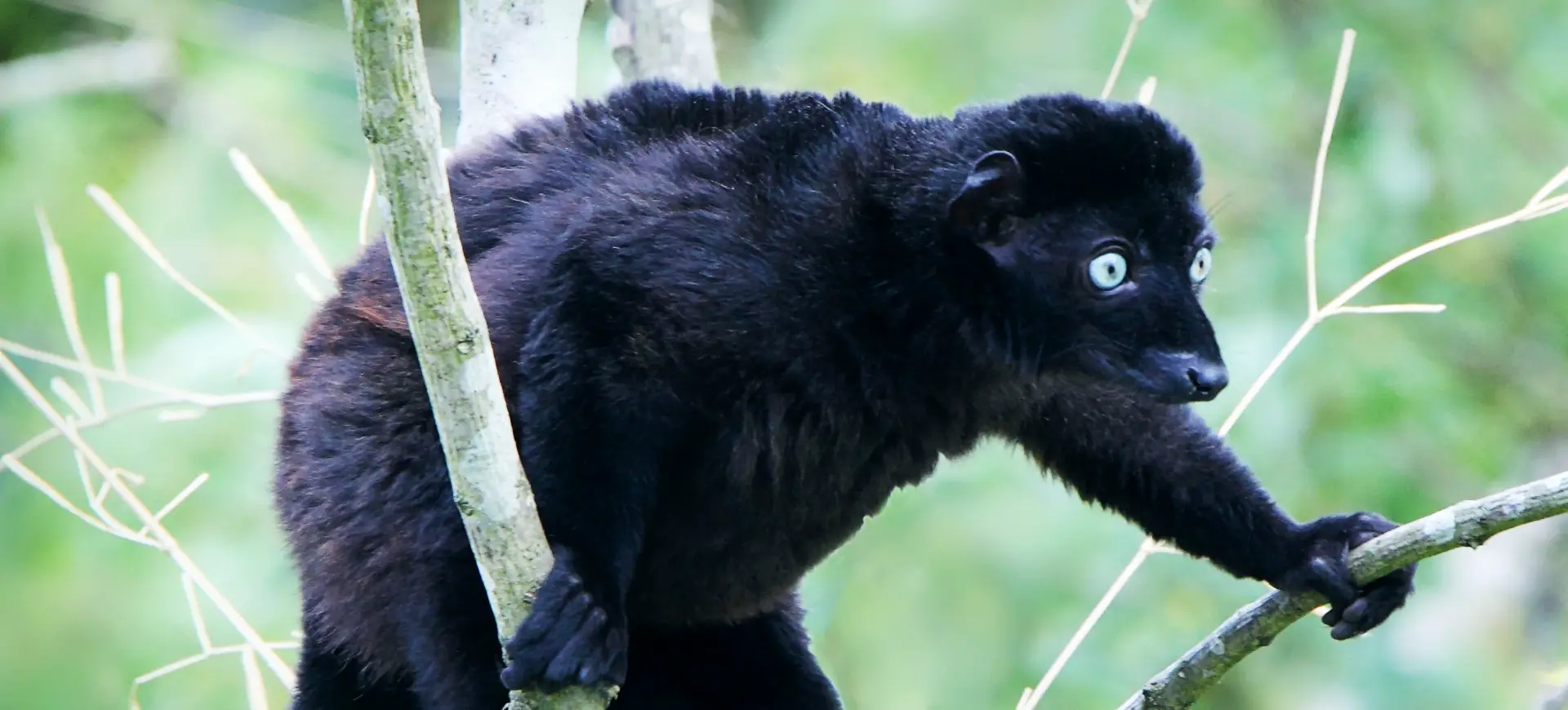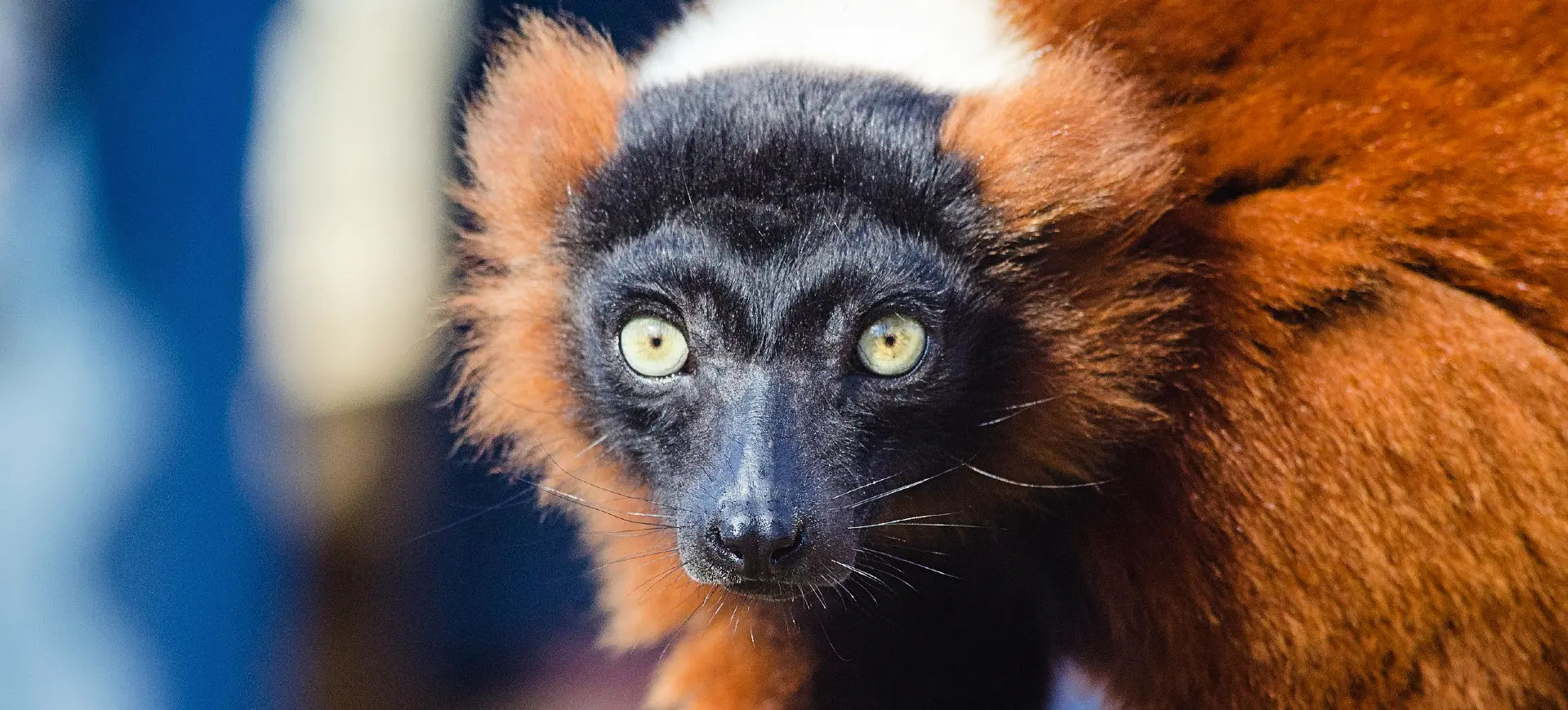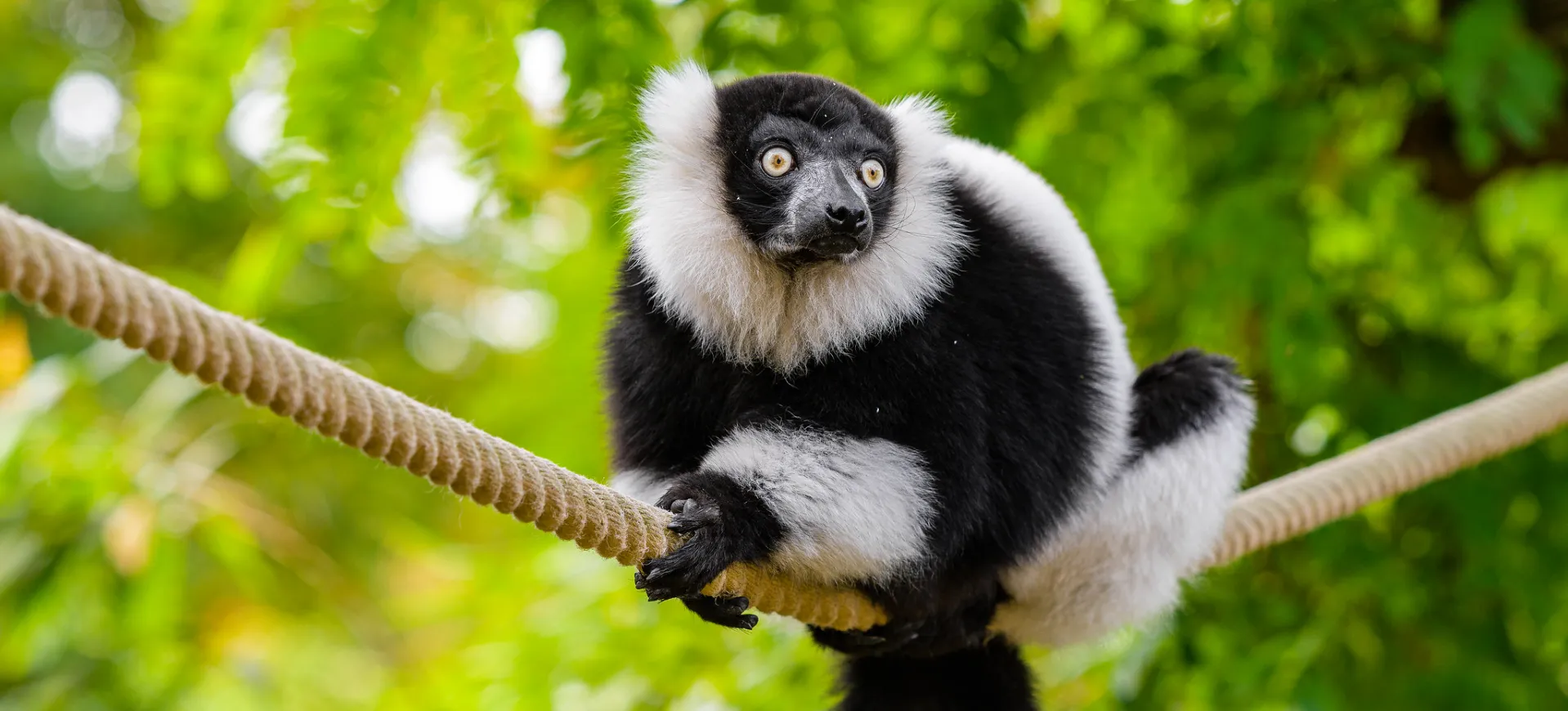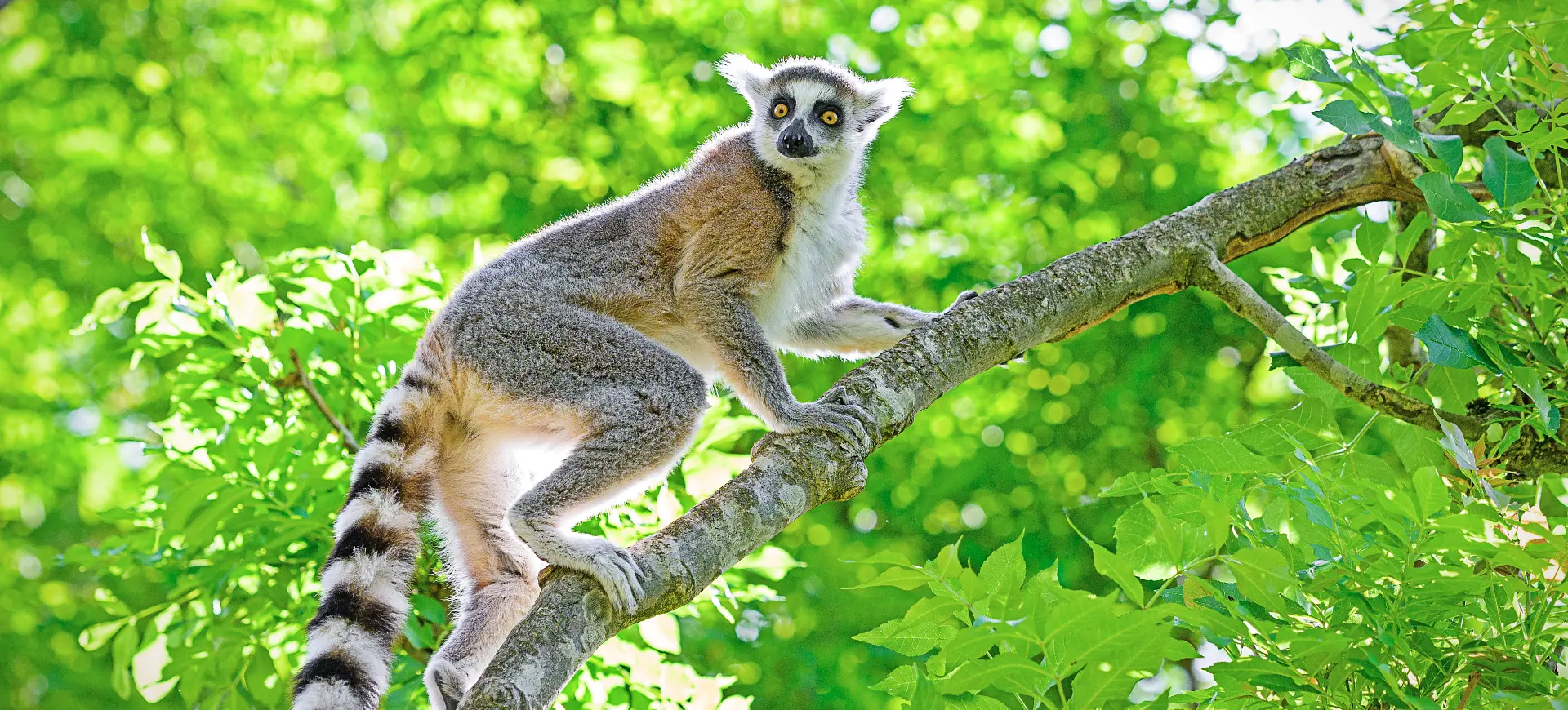Overview
The Red-fronted Lemur (Eulemur rufifrons), also known as the Red-fronted Brown Lemur, is a species of lemur endemic to Madagascar, primarily found in the dry deciduous forests and the spiny forests of the island’s southern and western regions. This species displays significant sexual dimorphism in coloration; males typically have a reddish-brown coat with a distinctive red patch on their forehead, while females are more uniformly gray or brown. They are adaptable animals, capable of thriving in various forest habitats, which is crucial for their survival given the seasonal fluctuations in food availability.
The Red-fronted Lemur plays a pivotal role in its ecosystem, contributing to seed dispersal and thus aiding in the regeneration of forest areas. Their diet is highly varied, consisting of fruits, leaves, flowers, and occasionally insects, making them important pollinators. Socially, Red-fronted Lemurs live in groups ranging from small family units to larger troops of up to 15 individuals, demonstrating complex social behaviors and communication systems. These groups are typically led by a dominant female, illustrating a matriarchal social structure common among many lemur species.
Despite their adaptability, Red-fronted Lemurs face significant threats from habitat destruction due to slash-and-burn agriculture, illegal logging, and human encroachment. These activities diminish their living spaces and fragment their populations, making it more challenging for them to find food and mates. Conservation efforts are underway to protect their habitats and ensure the survival of this species, focusing on establishing protected areas and promoting sustainable land use practices among local communities.
Physical Description:
Its distinctive coloration and sexual dimorphism characterize the red-fronted lemur. Males have a reddish-brown coat with a notable red patch on the forehead and white patches around the eyes, which stand out against their darker facial fur. Conversely, females tend to have a more uniform gray or brown coat without the red frontal patch. Both sexes have large, expressive eyes and a robust build well-suited to their arboreal lifestyle, allowing efficient movement through the forest canopy.
Their tails are long and bushy, aiding in balance as they navigate through the trees, and are similar in length to their body, which measures about 18 to 20 inches (45 to 50 cm) on average and a tail length of approximately 20 inches (50 cm), mirroring body length. The Red-fronted Lemur’s hands and feet are adapted for gripping, with opposable thumbs and big toes that enable them to grasp branches firmly. This physical adaptation is essential for their feeding behavior, allowing them to easily manipulate fruits, leaves, and other food sources.

Lifespan: Wild: ~25 years || Captivity: ~30 years

Weight: Male & Female: 5-7.7 lbs (2.3-3.5 kg)

Length: Male & Female: Body 18-20 inches (45-50 cm) || Tail ~20 inches (55 cm)
Characteristic:
Native Habitat:
The Red-fronted lemur is native to the dry, deciduous, and spiny forests of southern and western Madagascar, where it has adapted to various environmental conditions. These habitats provide essential resources, including food, shelter, and nesting sites, crucial for survival. The lemurs’ preference for forested areas with a dense canopy highlights the importance of these habitats for their arboreal lifestyle and feeding habits.
Conservation efforts to protect the Red-fronted Lemur’s habitat are critical, as human activities increasingly threaten these areas. Protected areas, reforestation, and habitat restoration projects are key strategies for preserving this species’ natural habitats. By maintaining the integrity of their ecosystems, conservation initiatives aim to ensure the long-term survival of the Red-fronted Lemur and the biodiversity of Madagascar’s unique forests.
Biomes:
Biogeographical Realms:
Continents:
Countries:
Diet:
Diet & Feeding Habits:
The Red-fronted Lemur’s diet is predominantly frugivorous, consisting mainly of fruits, supplemented by leaves, flowers, and occasionally insects and small vertebrates. This varied diet reflects their role as seed dispersers and pollinators within their ecosystem. The lemurs exhibit flexible feeding habits that allow them to adapt to the seasonal availability of food resources, ensuring their survival through periods of scarcity. During the rainy season, when fruits are abundant, they form the bulk of their diet, whereas in the dry season, they rely more on leaves and flowers.
Social foraging is common among Red-fronted Lemurs, with group members communicating about food locations and sharing resources. This behavior enhances group cohesion and improves the efficiency of finding and exploiting food sources. The lemurs’ ability to consume a wide range of plant species plays a critical role in their adaptation to diverse forest habitats, highlighting the importance of preserving their natural environments to ensure access to essential food resources.
Mating Behavior:
Mating Description:
The Red-fronted Lemur practices a polygamous mating system, with both males and females mating with multiple partners during the breeding season. This system promotes genetic diversity within their populations but can also lead to competitive behaviors among males. The breeding season aligns with the availability of abundant food resources, typically occurring during the rainy season. Females give birth to one or occasionally two offspring after a gestation period of approximately 120 days, timing births to coincide with periods of food abundance to maximize offspring survival.
Parental care is primarily the female’s responsibility, and she invests significant effort in nursing and protecting her young. The social structure of Red-fronted Lemur groups supports alloparenting, where other group members assist in caring for the young, enhancing the survival rates of offspring. This cooperative care system underscores the importance of social bonds and group cohesion in the development and well-being of the lemurs, highlighting the complex social dynamics within their communities.
Reproduction Season:
Birth Type:
Pregnancy Duration:
Female Name:
Male Name:
Baby Name:
Social Structure Description:
The social dynamics of the Red-fronted Lemur are characterized by a matriarchal system, where dominant females lead the groups and make critical decisions regarding movement and resource use. This structure plays a significant role in the stability and cohesion of the troop, influencing mating access and the allocation of resources among group members. Social interactions within these groups, such as grooming and communal foraging, are crucial for reinforcing social bonds and ensuring the well-being of all members. These behaviors not only facilitate the removal of parasites and the distribution of food but also serve as mechanisms for reducing tension and reinforcing hierarchical relationships within the troop.
Territoriality is a pronounced aspect of the Red-fronted Lemur’s social behavior, with groups actively defending their home ranges against intruders through vocal displays and physical posturing. This defense of territory ensures access to vital resources, such as food and nesting sites, critical for the survival and reproductive success of the group. The flexibility in their social organization allows Red-fronted Lemurs to adapt to varying ecological conditions and demographic pressures, showcasing their resilience in habitat fragmentation and environmental change. As conservation efforts continue to protect and restore their natural habitats, understanding and preserving the complex social structure of the Red-fronted Lemur remains a key element in ensuring the species’ long-term survival.
Groups:
Conservation Status:
Population Trend:
The exact count of Red-fronted leurs in the wild remains uncertain, but they are generally perceived as relatively abundant compared to other lemur species. This abundance is attributed to their adaptability and resilience in changing environmental conditions. Despite their persistent threats, Red-fronted Lemurs have shown an impressive ability to survive in secondary and fragmented forests, which points to their resilience and adaptability. Their diverse diet and flexibility in foraging strategies have enabled them to persist in these altered habitats.
However, it is believed that the overall population is experiencing a decline, with habitat loss and hunting cited as the main contributing factors. The increasing rate of deforestation, often driven by the conversion of forests into agricultural lands, poses a significant risk to the continued survival of these animals in the wild. Alongside habitat loss, hunting, often for bushmeat, has further exacerbated the pressure on their populations.
Population Threats:
The main threats to the Red-fronted Lemur include habitat destruction due to slash-and-burn agriculture, illegal logging, and mining. These activities lead to significant habitat fragmentation, reducing their available living space and food sources. Hunting for bushmeat and the pet trade also directly threaten their populations. Climate change may further impact their habitat and food availability, exacerbating the challenges to their survival.
Conservation efforts must prioritize habitat protection and restoration, enforcing hunting regulations and sustainable land management practices. Education and awareness campaigns can also play a crucial role in reducing the demand for bushmeat and pets, contributing to the conservation of the Red-fronted Lemur.
Conservation Efforts:
Conservation strategies for the Red-fronted Lemur have increasingly emphasized integrating local community involvement with traditional conservation measures. This approach includes the creation of community-managed forest reserves, where local people play a direct role in protecting and managing the habitat of the Red-fronted Lemur. Such participatory conservation initiatives aim to provide sustainable livelihood options that reduce dependence on forest resources, thereby mitigating one of the primary threats to the species’ habitat. Additionally, reforestation projects aim to restore degraded areas and create biological corridors that connect isolated fragments of forest, enhancing genetic flow and increasing the resilience of lemur populations to environmental changes.
On the global stage, conservation efforts are supported by international partnerships and funding, which are critical for implementing large-scale conservation projects and for researching the ecological needs and threats facing the Red-fronted Lemur. Anti-poaching patrols and wildlife law enforcement have been stepped up, with training provided to local rangers to effectively combat illegal hunting and logging. Educational campaigns aimed at both local and international audiences seek to raise awareness about the plight of the Red-fronted Lemur, promoting conservation actions and fostering a global commitment to preserving Madagascar’s unique biodiversity. These concerted efforts are vital for protecting the Red-fronted Lemur’s habitat and securing the species’ future in the wild.
Additional Resources:
Fun Facts
- Red-fronted Lemurs are diurnal, meaning they are active during the day.
- They are excellent climbers and can often be seen leaping through the trees with agility.
- Like many lemurs, they have a “dental comb,” a unique formation of teeth for grooming.
- They participate in “sunbathing,” sitting in a yoga-like position with their bellies exposed to the sun.
- Red-fronted Lemurs have been observed using and sharing the same sleeping sites, often tree holes or dense foliage, over multiple days.
- They have a variety of vocalizations, including warning calls to alert group members of predators.
- They have a longer lifespan than many other mammals of a similar size, living up to 30 years in captivity.
- Females have priority access to food and can displace males from feeding sites.
- Red-fronted Lemurs are known to consume soil, possibly to counteract toxins in their diet or obtain certain minerals.
- They are strong swimmers and can often be seen crossing bodies of water in their habitat.







